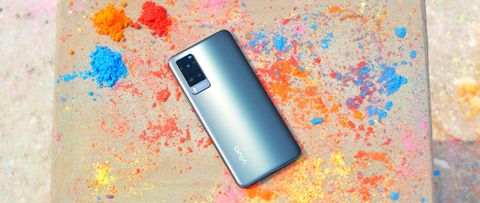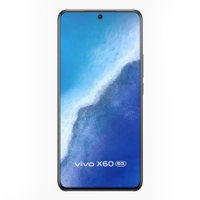TechRadar Verdict
The Vivo X60 continues the tradition of this series to bring some of the best cameras in the category, and this time around the company does that in a sleek and attractive package, which results in the battery taking a hit.
Pros
- +
Top-notch cameras
- +
Excellent display
- +
Premium in-hand feel
Cons
- -
Poor battery life
- -
Uninstallable bloatware
- -
No 3.5mm audio port
Why you can trust TechRadar
2-minute review
Let’s be honest, when we say premium smartphones, Vivo devices don’t usually come to mind, but with the new Vivo X60 series, the company has definitely changed that perception. The Vivo X50 despite being part of Vivo’s flagship series was rather basic, in fact the competition which is OnePlus 9R also has a lot of compromises.
The Vivo X60 is the base variant of the new flagship series of smartphones from Vivo besides the select Nex series which is more of a limited edition. The company launched the smartphone in India last month and has three variants in the series.
The Vivo X60 Pro Plus is the most premium offering in the current lineup and comes with a Qualcomm Snapdragon 888 chipset with UFS 3.1 storage. This is followed up by the Vivo X60 Pro which is the middling variant of the X60 series and it comes with a Qualcomm Snapdragon 870 chipset with UFS 3.1 storage.
And then there is the Vivo X60 which is the most basic variant and comes with a Qualcomm Snapdragon 870 chipset with UFS 3.1 storage. It comes with a 6.56-inch flexible AMOLED FHD+ display that also has 120Hz refresh rate, 240Hz response time, and HDR10+ visuals which is similar to the rest of the series. The glass on top is Corning Gorilla Glass 6 and has FullHD+ resolution.
The Vivo X60 comes with some impressive camera specs that not only stack up to the competition but may set a new benchmark for the price segment. The Qualcomm Snapdragon 870 chipset has the highest clock speed and it ensures a top-notch gaming experience along with a high refresh rate display. It also ensures the smooth performance of some of the more taxing photography modes.
But the smartphone does slack in terms of battery performance and it struggles to give a day’s worth of battery life with such a high refresh rate display. And if I had to pick another negative, I would have to go with the lack of a 3.5mm audio port.
Vivo X60 price in India and availability
Vivo X60 price in India is Rs 37,990 for the base 8GB + 128GB variant and Rs 41,990 for the 12GB + 256GB variant. Colour options include Midnight Black and Shimmer Blue. The smartphone is available with a 10% cashback.
Design
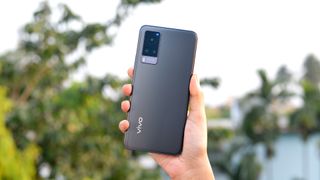
The Vivo X60 is one of the better-looking smartphones that are currently available considering that most of them now follow a similar design blueprint. We reviewed the Midnight Black variant of the Vivo X60 which has dark ash and slate chrome finish on the back. Vivo has used Corning Gorilla Glass 6 on the back and has given it what it is calling a Satin Finish.
At 7.36 mm, this really is one of the thinnest phones we have used. And this is one of those rare smartphones that has a very fine matte finish on the back panel which makes it catch almost no fingerprint smudges, making it ideal to use without a cover. But we have to mention that the back panel is rather slippery in the hands which again makes it ideal to use with a cover.
One of the other attractive features of the back panel is the arrangement of the triple-camera setup on the device. It is in a neat triangular format where the large main camera is on top with the two secondary ones below it. Vivo has used a Dual-Tone Step with the camera setup where the camera lens is on a level with the LED flash on another level under it and then the back panel. But I have to mention that the camera bulge is rather big and the smartphone without a back cover wobbles a lot on a hard surface.
The front panel of the Vivo X60 features a 6.56-inch display that covers almost the entirety of the front panel. There are negligible bezels with the most significant being on the bottom which is still not noticeable.
The top panel of the device has only one microphone hole, while the bottom panel features the SIM-tray, another microphone hole, the USB-C port, and the speaker grille. The right-hand panel of the device comes with the power button which is textured to differentiate it from the volume rockers beside it. The left-hand panel is just the frame and devoid of anything else.
Display
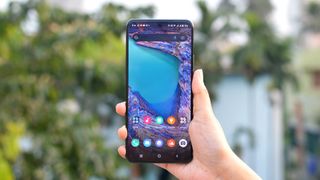
The 6.56-inch AMOLED FHD+ display on the Vivo X60 is one of its best features and is a treat to look at. The smartphone has a 92.7% screen-to-body ratio with a 398 ppi density in the display that measures 1080 x 2376 pixels. There’s Schott Xensation Up on top of the display for protection.
The Vivo X60 display comes with a 120Hz refresh rate and 240Hz response rate which results in excellent performance during gaming and even the day-to-day use of the smartphone is enhanced.
The display produces some vivid visuals with 6000000:1 contrast ratio. It produces some excellent blacks along with radiant colours which don’t fade even in bright outdoors. Even when taking photographs outside the display is visible for a clear viewfinder experience.
Performance
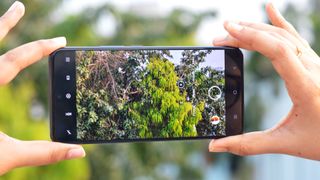
The Vivo X60 features a Qualcomm Snapdragon 870 which is a 5G chipset. And the variant we received for review featured 12GB LPDDR4X RAM with 256GB UFS 3.1 storage. This 7nm Octa-Core processor has a frequency of 3.2 GHz for a single core with 2.4GHz for three more cores and 1.8 GHz for the four other cores. It features the Adreno 650 GPU which is currently top of the line.
This ensures that the Vivo X60 steamrolls through multiple apps and even handles games while running other applications. The smartphone can switch between multiple apps and even keeps the state of up to four apps in the memory for quite a while.
Now the Vivo X60 really shines when it comes to gaming, and this is where the VRAM technology can have a field day. Heavy games like Call of Duty, Garena Free Fire and Genshin Impact really are a treat to play on this device with the higher refresh rate display. While Free Fire is the only game among these that supports 120fps gaming, the gaming experience of the others was lifted as well.
While playing such games at the highest fps and quality possible is a smooth experience it does not really produce much heat, which is definitely a positive for the smartphone. With the support of VRAM Call of Duty Mobile averaged 60fps and only dipped to 55fps on a handful of occasions and with Free Fire, the game averaged 100fps and did hit the peak 120 at times. Genshin Impact is notorious for having low framerates, but it averaged around 53fps and hit a peak of 60 at times.
Software

Funtouch OS 11.1, which is based on Android 11, is the one that runs on Vivo X60 and it has to be one of the more efficient versions of the skin from Vivo yet. It is closer to the stock Android experience than it is with the previous versions of Funtouch OS.
The default launcher on the Vivo X60 comes with an App Drawer, while users can also opt to keep their preferred icons on the adjacent screens as well. Users can opt to turn on the Always On Display to get key information without having to turn on the display.
But there are a few pre-installed apps like Netflix which don’t have the option to be uninstalled. This is unusual and something that has been seen in previous Vivo smartphones as well and Vivo argued that they feel that these are some necessary apps which is why they come pre-installed. And yet there could very well be people who don’t need these apps on their phones.
Camera

Moving on to the star feature of the Vivo X60, the smartphone comes with a triple camera setup on the back which includes a 48MP primary camera with f/4.8 aperture, a 13 MP portrait camera with 2x optical zoom, and a 13 MP ultrawide camera. The lenses on these cameras are from Zeiss, and the camera systems feature Biotar style portrait, Visible Infrared 5-axis video stabilization, pixel shift ultra HD imaging, and HDR Super night shots.
The rear camera captures some extremely detailed shots that have excellent colour reproduction and true to life warmth, highlights and shadows using the Pixel Shift Ultra HD Imaging where the sensor moves to capture each colour and not guess what they could be.
The Portrait mode using the Biotar lens does an accurate job at distinguishing the lines of the subject and creates a true depth image. The Super Macro is a brilliant feature that can click extreme closeup shots of small items. In one of the images, even the dust particles and fibers can be made out in the shot.
The wide-angle shot does not compromise on the details in the shot for a wider frame, which is something that has been available in flagship-grade cameras. The night shots are rather accurate and don’t overcompensate for the lack of light to brighten the image. The details are captured accurately and portrayed without as much noise as possible. This is also true for the ultra-wide night shot that could be really useful when capturing night landscapes away from big cities.
The Supermoon and Astro shots pretty much require a tripod to capture and still don’t produce great results in big cities since there is too much light pollution. The video capturing on the Vivo X60 is something of a charm, and the OIS works well to stabilize the scene even when shooting with the camera while moving.
As for the selfie camera, the Vivo X60 features a 32MP camera with f/2.5 aperture, which produces some accurate selfies with excellent colour reproduction. The vibrant colours are kept vibrant while the muted ones remain as they should without having all the colours in the scene being glossed over.
Camera samples










Battery
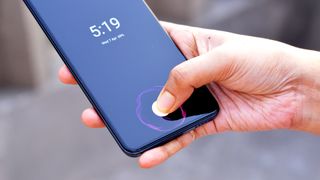
The battery is the only segment where the Vivo X60 falters in performance. It comes with a 4,200mAh battery with 33W FlashCharge. The battery is recharged rather quickly from 1% to a 100 in about 40 minutes.
But the phone just does not want to last more than a day and half even when different screen refresh rates are being used. When using the smartphone as a daily driver with 60Hz refresh rate it lasted us for about 36 hours while that number dropped to 33 hours with 120Hz turned on. In fact, with the Smart Switch mode which detects the scene on the display and uses the appropriate refresh rate, the results produced are similar. We firmly believe that this is something that Vivo could fix with some tweaking of the software.
Verdict
Buy it if…
You want a smartphone that takes excellent photographs
The camera performance of the Vivo X60 despite being the most basic one in the new range is off the charts and is comparable to flagships, with numerous modes and video options.
You want a smartphone with a great display
The Vivo X60 comes with an excellent 120Hz AMOLED screen that is ideal for gaming and viewing content with excellent colour reproduction and brightness.
You want a premium device without paying a premium
Honestly, the Vivo X60 is a stunning phone with a great in-hand feel which is comparable to premium smartphones in the market, and premium internals including a Snapdragon 870 SoC.
Don't buy it if…
You want a smartphone with a great battery life
The Vivo X60 does not have the best battery life in its class and requires some tuning to fix.
You want a smartphone without any bloatware
While not all apps are considered bloatware, there are quite a few on the Vivo X60, and some of those can’t even be removed.
Hardcore gamer, gadget enthusiast & cinema buff | Gaming, tech correspondent & reviewer at TechRadar
